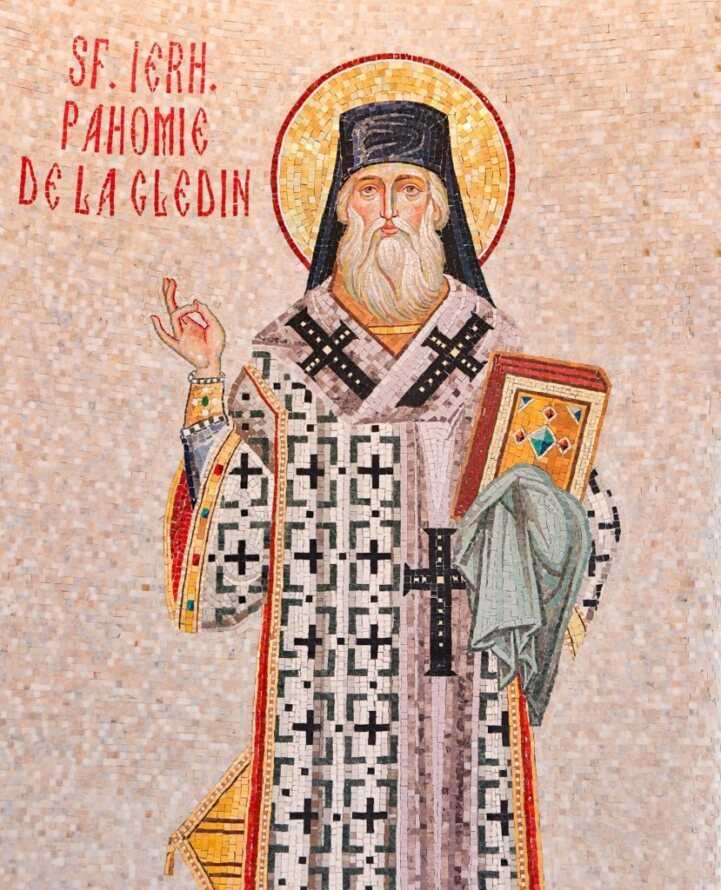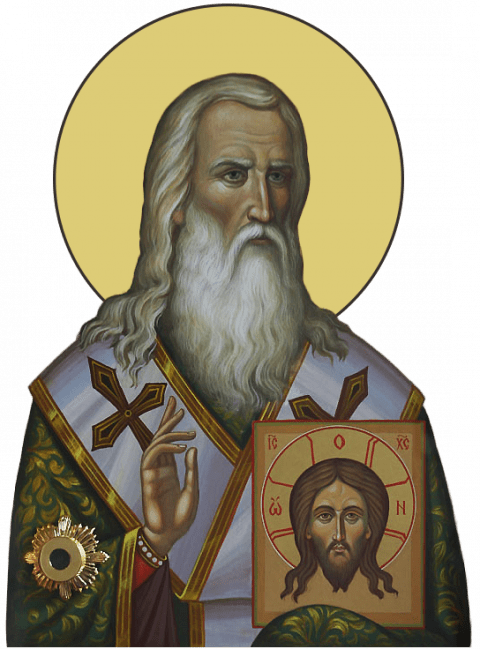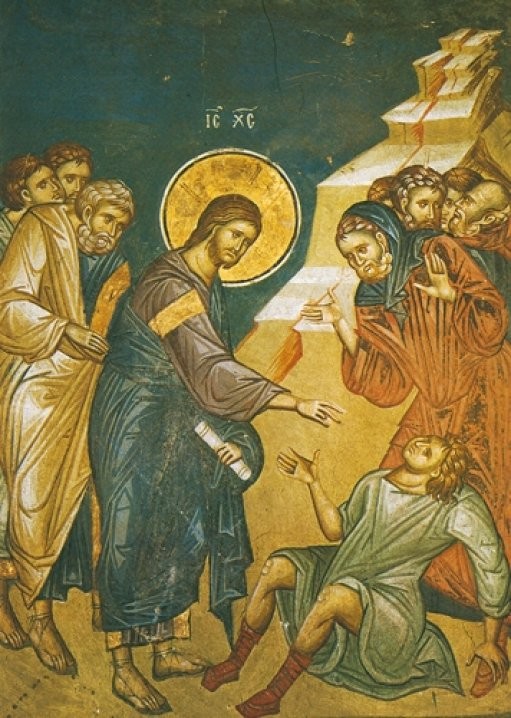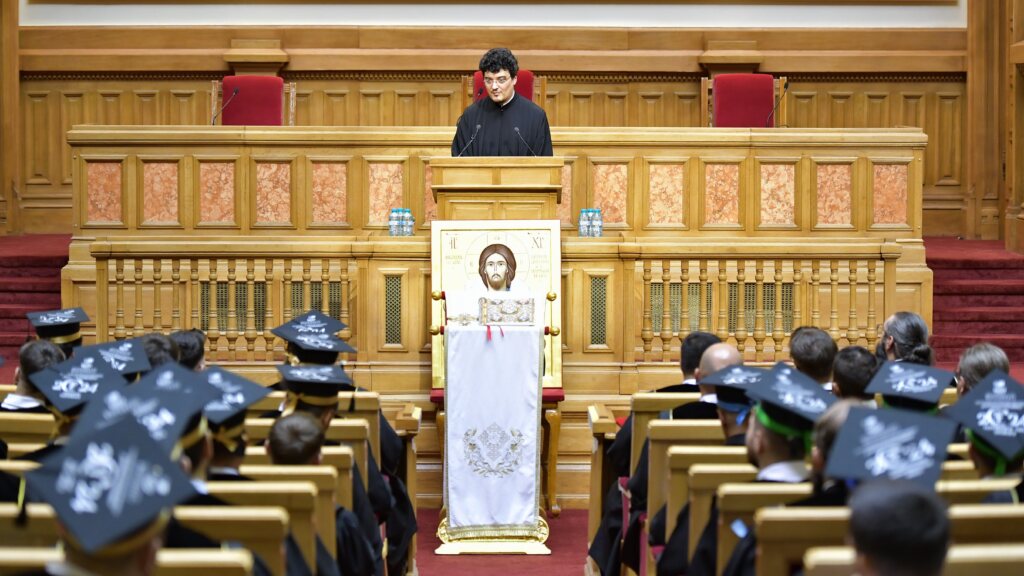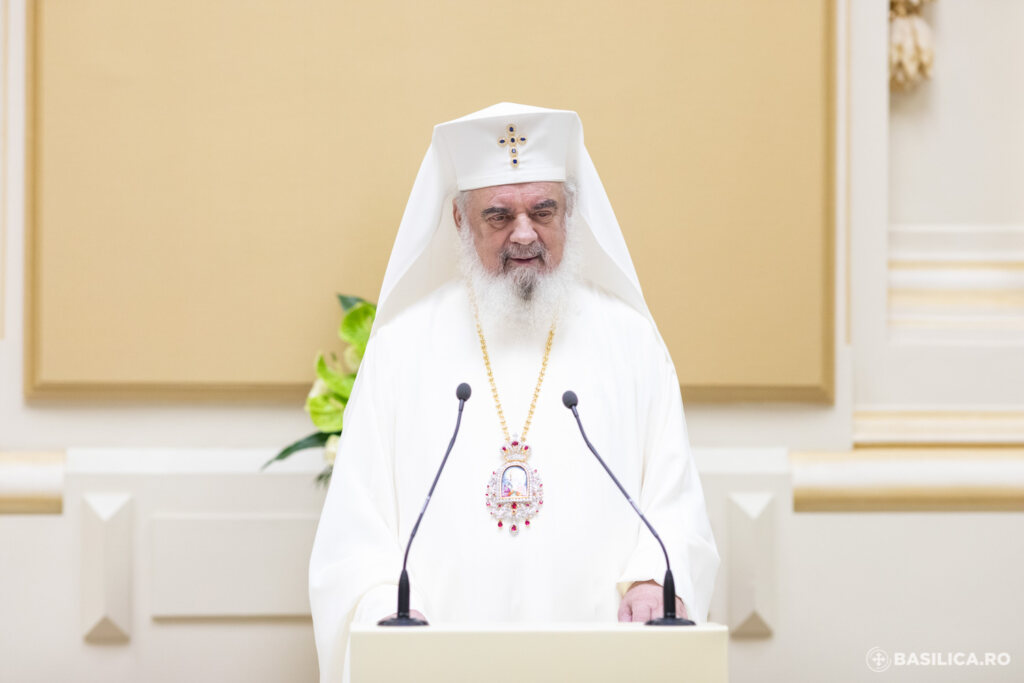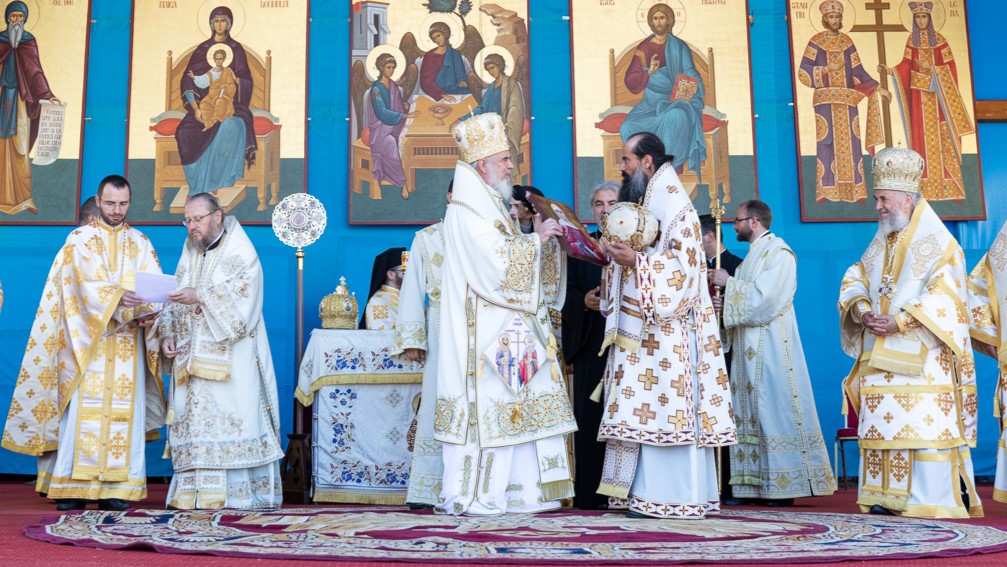Orthodox Calendar – April 14
4th Sunday of Great Lent: St John Climacus (of the Ladder)
Gospel of the Healing of the Mute: The Sermon on the Mount – Blessings of the Kingdom
- Then one of the crowd answered and said, “Teacher, I brought You my son, who has a mute spirit. And wherever it seizes him, it throws him down; he foams at the mouth, gnashes his teeth, and becomes rigid. So I spoke to Your disciples, that they should cast it out, but they could not.” He answered him and said, “O faithless generation, how long shall I be with you? How long shall I bear with you? Bring him to Me.” Then they brought him to Him. And when he saw Him, immediately the spirit convulsed him, and he fell on the ground and wallowed, foaming at the mouth. So He asked his father, “How long has this been happening to him?” And he said, “From childhood. And often he has thrown him both into the fire and into the water to destroy him. But if You can do anything, have compassion on us and help us.” Jesus said to him, “If you can believe, all things are possible to him who believes.” Immediately the father of the child cried out and said with tears, “Lord, I believe; help my unbelief!” When Jesus saw that the people came running together, He rebuked the unclean spirit, saying to it: “Deaf and dumb spirit, I command you, come out of him and enter him no more!” Then the spirit cried out, convulsed him greatly, and came out of him. And he became as one dead, so that many said, “He is dead.” But Jesus took him by the hand and lifted him up, and he arose. And when He had come into the house, His disciples asked Him privately, “Why could we not cast it out?” So He said to them, “This kind can come out by nothing but prayer and fasting.” Then they departed from there and passed through Galilee, and He did not want anyone to know it. For He taught His disciples and said to them, “The Son of Man is being betrayed into the hands of men, and they will kill Him. And after He is killed, He will rise the third day.”
Holy Hierarch Pachomius of Gledin
He was born in 1674, in Gledin village, Bistriţa-Năsăud region. Having been brought up by parents obedient to God, he became a true follower of Christ and because the Orthodox faith was persecuted in Transylvania he left his parents’ house and went to Moldavia, to Neamţ Monastery, where he joined monastic life and later on was consecrated as priest.
After abbot John has fallen asleep into the Lord, the monastic community elected Venerable Pachomius as abbot, although he did not want that. Longing to live an ascetic life, the Saint left the igumen’s position after only two years and went to meet the great spiritual father Saint Demetrius of Rostov († 1709).
After living for two years in Russia, Saint Pachomius came back to Neamţ, but he did no longer accept to be abbot, and retired together with four of his disciples to a secluded place in the forests around, where he set up a skete. But neither there could he enjoy the peacefulness and quietness he loved so much because after two years he was elected bishop of Roman (1707-1714).
Given this new task, although Saint Pachomius yearned for a secluded life, prayer and study, he turned out to be a good administrator and custodian, taking good care also of the material needs of his eparchy.
After seven years he retired from the episcopal see and went back to his hermitage, where he built a church, dedicating it to the Holy Protecting Veil of the Mother of God, naming the monastic settlement Pocrov Skete. The rule Saint Pachomius set up was the following: the monks kept always silent, never ate meat, spent all night in vigil, and always fully obeyed the igumen.
Saint Pachomius was one of the most remarkable educated clergymen of his time, a monk with humble thinking and ardent love for Christ, shining in the Church through the holiness of his life. He loved ascetic life, but he joined, through discernment, prayer with the work of the body and of the mind, in the healthy tradition of the ancient Romanian hesychastic monasticism.
Saint Pachomius has fallen asleep into the Lord on 14 April 1724, while he was at Pechersk Lavra in Kiev. Soon, igumen Lazar from Pocrov brought his body to the skete he had founded and buried it in the nave.
Saint Hierarch Pachomius was placed among saints through the Tomos of the Holy Synod of the Romanian Orthodox Church of 14 November 2006. By God’s will, on 9 September 2013 the Saint’s holy relics were found in the nave, where from they were abundantly spreading a nice fragrance.
Through his holy prayers, Lord Jesus Christ, our God, have mercy on us. Amen.
Troparion – Tone 4:
Oh, most brilliant star arisen in the land of Gledin, you have shone as a divine sign in the land of Moldavia, enlightening the hearts of the faithful. Unshakable tower of pure prayer, precious adornment of the Romanian hierarchs and founder of Pokrov Skete in the land of Neamț, Saint Hierarch Pachomius, pray to Christ our God to save our souls.
Saint Martin the Confessor, Pope of Rome
Saint Martin the Confessor, Pope of Rome, was a native of the Tuscany region of Italy. He received a fine education and entered into the clergy of the Roman Church. After the death of Pope Theodore I (642-649), Martin was chosen to succeed him.
At this time the peace of the Church was disturbed by the Monothelite heresy (the false doctrine that in Christ there is only one will, whereas in fact He has a divine, and a human will). The endless disputes of the Monothelites with the Orthodox took place in all levels of the population. Even the emperor Constans (641-668) and Patriarch Paul of Constantinople (641-654) were adherents of the Monothelite heresy. The emperor Constans II published the heretical “Pattern of Faith” (Typos), obligatory for all the population. In it all further disputes were forbidden.
The heretical “Pattern of Faith” was received at Rome in the year 649. Saint Martin, a firm supporter of Orthodoxy, convened the Lateran Council at Rome to condemn the Monothelite heresy. At the same time Saint Martin sent a letter to Patriarch Paul, persuading him to return to the Orthodox confession of faith. The enraged emperor ordered the military commander Olympius to bring Saint Martin to trial. But Olympius feared the clergy and the people of Rome who had descended upon the Council, and he sent a soldier to murder the holy hierarch. When the assassin approached Saint Martin, he was blinded. The terrified Olympius fled to Sicily and was soon killed in battle.
In 654 the emperor sent another military commander, Theodore, to Rome. He accused Saint Martin of being in secret correspondence with the enemies of the Empire, the Saracens, and of blaspheming the Most Holy Theotokos, and of uncanonically assuming the papal throne.
Despite the proofs offered by the Roman clergy and laity of Saint Martin’s innocence, the military commander Theodore with a detachment of soldiers seized Saint Martin by night and took him to Naxos, one of the Cyclades islands in the Aegean Sea. Saint Martin spent an entire year on this almost unpopulated island, suffering deprivation and abuse from the guards. Then they sent the exhausted confessor to Constantinople for trial.
They carried the sick man on a stretcher, but the judges callously ordered him to stand up and answer their questions. The soldiers propped up the saint, who was weakened by illness. False witnesses came forward slandering the saint and accusing him of treasonous relations with the Saracens. The biased judges did not even bother to hear the saint’s defense. In sorrow he said, “The Lord knows what a great kindness you would show me if you would deliver me quickly over to death.”
After such a trial they brought the saint out in tattered clothes to a jeering crowd. They shouted, “Anathema to Pope Martin!” But those who knew the holy Pope was suffering unjustly, withdrew in tears. Finally the sentence was announced: Saint Martin was to be deposed from his rank and executed. They bound the half-naked saint with chains and dragged him to prison, where they locked him up with thieves. These were more merciful to the saint than the heretics.
In the midst of all this the emperor went to the dying Patriarch Paul and told him of the trial of Saint Martin. He turned away from the emperor and said, “Woe is me! This is another reason for my judgment.” He asked that Saint Martin’s torments be stopped. The emperor again sent a notary and other persons to the saint in prison to interrogate him. The saint answered, “Even if they cripple me, I will not have relations with the Church of Constantinople while it remains in its evil doctrines.” The torturers were astonished at the confessor’s boldness, and they commuted his death sentence to exile at Cherson in the Crimea.
Saint Martin departed to the Lord, exhausted by sickness, hunger and deprivations on September 16, 655. Two other bishops, who were banished to Cherson, also died after many hardships. The Saint was buried just outside the city of Cherson, in the Blachernae church of the Most Holy Theotokos. Great crowds of people visited his tomb because of the many miracles which took place there. Later, his relics were transferred to Rome, and placed in a church dedicated to Martin of Tours (November 11). The transfer of his relics is commemorated on November 12.
The Monothelite heresy was condemned at the Sixth Ecumenical Council in 680.
In Greek usage, the holy Confessor Martin is commemorated on April 13 and on September 20, while the Slavic churches commemorate him on April 14.
Troparion — Tone 3
(Podoben: “Your confession of the Divine Faith…”)
You strengthened the Church with true doctrines, O godly-wise Hierarch Martin; / you confessed the two natures of Christ and vanquished heresy. / O venerable Father, / entreat Christ God that He may grant us great mercy.
Womanmartyr Thomais of Alexandria
When he awakened, the monk felt joy and peace in his soul. After this, he told Saint Daniel that he was no longer bothered by the temptations of the flesh. Abba Daniel exclaimed, “Great is the boldness of those who have struggled for chastity.”
Many found both spiritual joy and release from their passions at the grave of Saint Thomais. Her holy relics were transferred to Constantinople to one of the women’s monasteries. The Russian pilgrim Archdeacon Zosimas venerated them in 1420.
Saint Thomais is invoked by those seeking deliverance from sexual impurity. Other saints whose intercession we seek for this purpose are: Saint John the Much-Suffering (July 18) and Saint Moses the Hungarian (July 26).
Troparion — Tone 3
Your holy martyr Thomais, O Lord, / through her suffering has received an incorruptible crown from You, our God. / For having Your strength, she laid low her adversaries, / and shattered the powerless boldness of demons. / Through her intercessions, save our souls!
